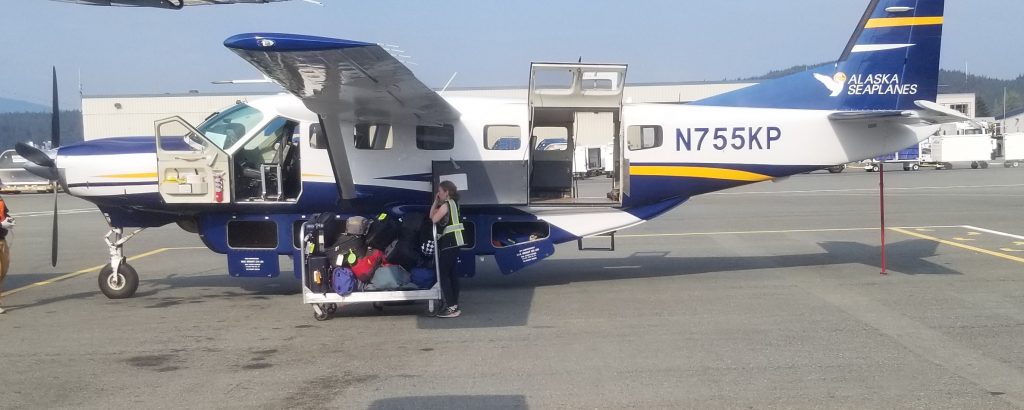
After spending a day in Juneau gearing up, we flew over to Gustavus, Alaska and then got a ride to Bartlett Cove in Glacier Bay National Park and Preserve. We then rented kayaks and headed into Glacier Bay.

Shortly after being dropped off by the Day Boat at Mount Wright, the team (left to right, Jacob Hassan, Nick Wiesenberg, Jack Whitehouse and Greg Wiles) packed two kayaks and headed for the East Arm (Muir Inlet) of Glacier Bay. The primary objective of this trip is to recover wood that will allow the team to bridge a gap in a 2,000 year long tree-ring record. The age of the wood needs to be about 2000 years old. We know from previous studies where we need to go to optimize our chances of finding that age wood.
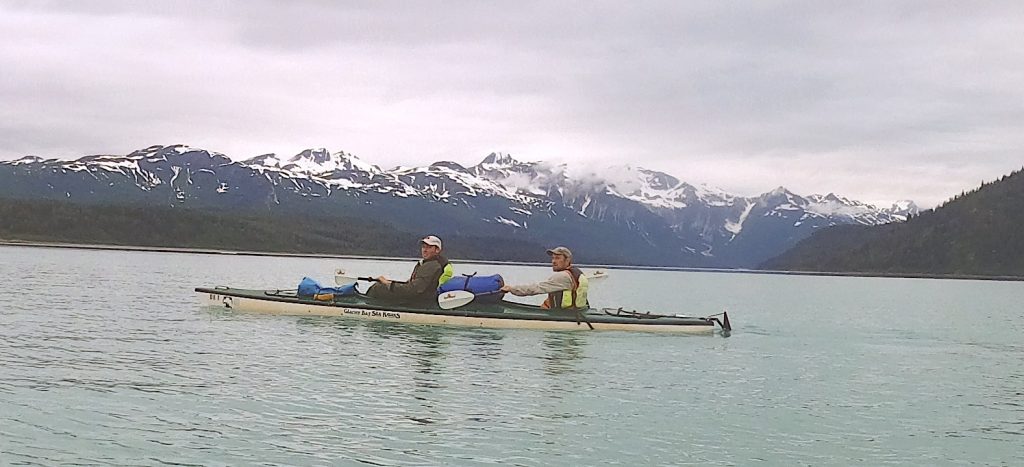
Jack and Nick enthusiastic to get paddling north into Muir Inlet (aka the East Arm).

Much of the work was done by examining stream cuts through various glacial and fluvial landforms and working our way up and down outwash fans and streams in the area.

Jacob standing on the bank of a part meandering – part braided stream. He is preparing to crash the brush on the right to make headway.

Jack along the shore of Adams Inlet is optimistic that this section of a fan and delta may contain wood needed for his thesis.

Nick directing the sample collection of a large sitka spruce – likely run over by ice about 1500 years ago during a cold time now known as the LALIA (Late Archaic Little Ice Age). It may be that this cool interval was forced, in part, by major volcanic eruptions and various associate feedbacks in the mid 500s CE.

The group taking a well-deserved rest after a morning of exploring a fan.
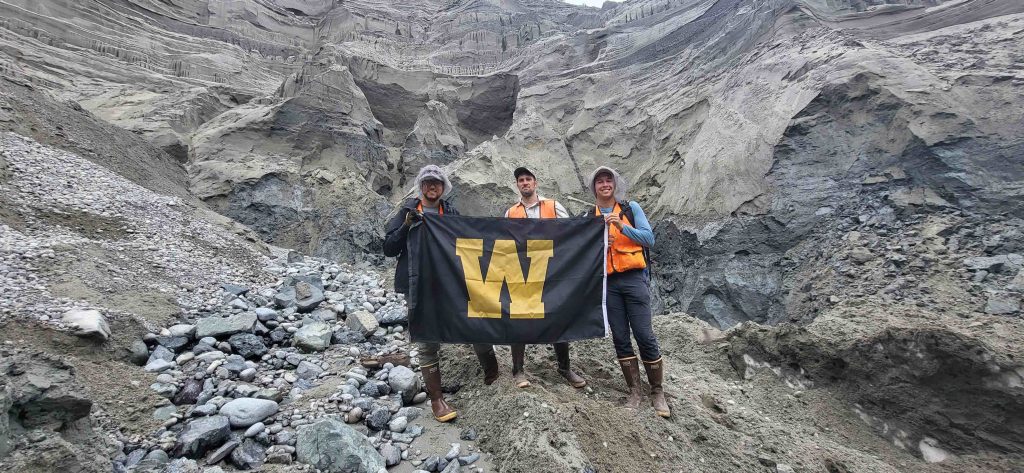
One of key deposits that the team investigated were extensive Gilbert type deltas that overlie flooding surfaces from lakes. The lakes (in this case Adams Lake) were formed about 1500 years ago when glaciers in the West Arm advanced damming up the East Arm of Glacier Bay. These lakes preserved forests of that age, and now with ice retreat, isostatic uplift, and erosion the lake are gone and the glaciolacustrine sediment sequences are being eroded away liberating the logs.

This is the same photo – a closeup showing the gray lacustrine clays and silts that are varved (to the right of Jack) and the dipping sands of the foresets overlying the lake clays. Beneath the clays is the flooding horizon that preserved the wood.

Descending a delta from above – here Jacob is walking down the delta foresets into the paleobasin.
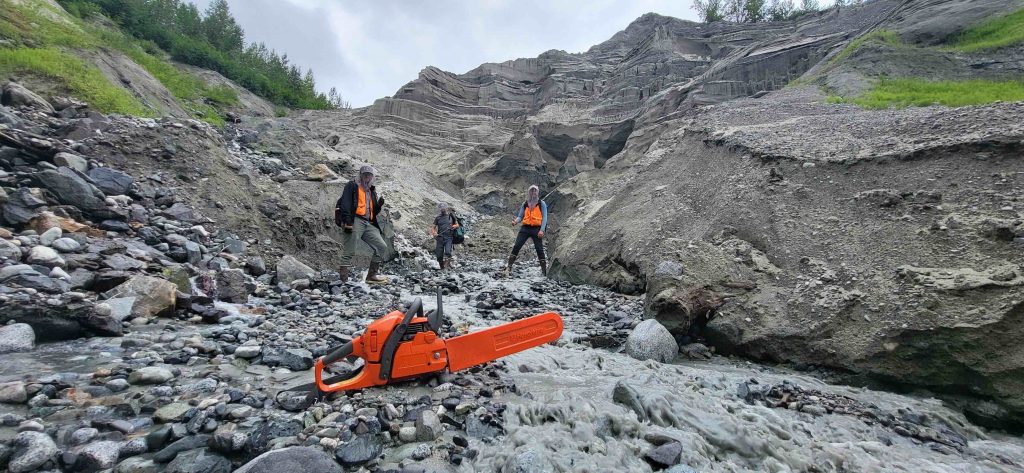
The sampling team – yes we have a permit with the National Park Service for chainsaw use. Nick is a chainsaw expert and is able to minimize the saws impact and take high quality samples.

One of the more demanding legs of the trip was thrashing our way up the Casement Glacier outwash plain. We started from its delta in Adams Inlet and headed north with the hopes of setting a camp 8 or so miles from the sea to sample wood at the glacier and on its outwash. Unfortunately, the massive outwash river was pegged along the west side of the valley making travel through the brush difficult. We spent one day sampling washed out logs in the hopes that the complex glacial and fluvial history of the valley might preserve the logs in the age range that we sought. It was slightly miserable with poor weather as well.

Jacob managed to look optimistic as he takes an increment core from a log on the Casement Fan.

Near the delta of Casement River the tidal effects are evident. Here the ebbing tide with a fluvial, unidirectional rippled surface reworks the intertidal mudcracks. Note too, the bubbles evident along the hexagonal boundaries of the mudcracks.

We give a big shout out to Glacier Bay Sea Kayaks for their help with logistics and equipment. These well-maintained boats are necessary for this work as most of the waters we worked in were non-motorized water, meaning no motor boats.

Here is a shot of the two double kayaks at our Nunatak Fan camp in Muir Inlet. Nick anticipated all the gear and food we would need for the trip and carefully did the planning to ensure that we could fit all we needed in these two boats for the entire 10 days. He also made sure that it would stay dry in the often very wet conditions in this coastal rainforest setting.
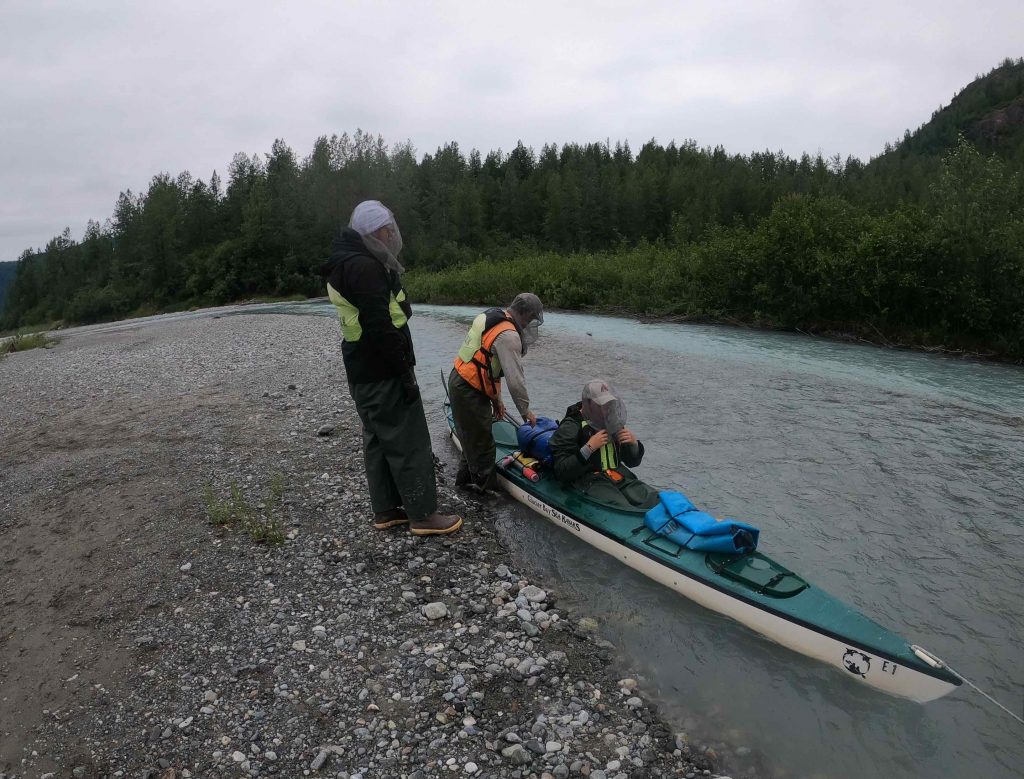
The group plans a launch out of one camp on the way to the next. Note the head nets on all the crew. Bugs were an issue and head nets were worn frequently.
 A view looking west from he Nunatak camp toward Muir Inlet.
A view looking west from he Nunatak camp toward Muir Inlet.

Jack scoped out this barnacle encrusted log – the core was excellent and may be part of the gap-filling ring – width series.

Camped at Muir Point in Muir Inlet. The glacier was here at this fan in 1880 when John Muir has his cabin close to our camp. Only the stone chimney is left to the cabin now and it is well hidden in a nearby forest. Here the group enjoys a nice evening in the intertidal burning driftwood from the beach.
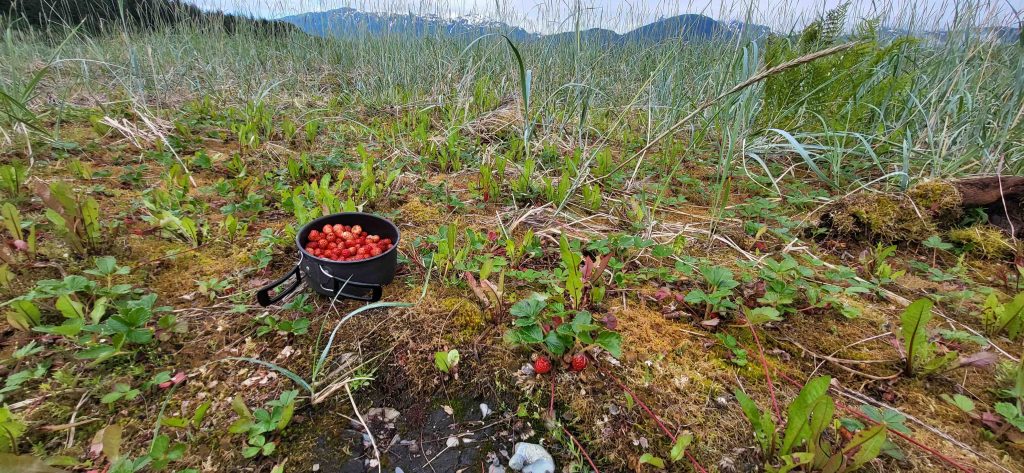
At Muir Point, Nick picked a pile of strawberries that were just right in terms of ripeness and sweetness.

For lunch we had wraps of strawberries, honey peanut butter and nuts. Nick outdid himself with the meal planning.

This is a Bear Highway on top of a storm berm. Each time a bear passes over the berm it steps in the same spots keeping the moss from growing in the footprints.

Nick finding a creative way of crossing the stream in search of the wood.

At the end of the 10 days we were picked up by the day boat and completed our time in Glacier Bay with a trip up the West Arm. The day was brilliant and sunny and we met guides from Alaska Mountain Guides and shared stories of adventures in Alaska.

A sea star revealed itself as we waited at low-tide for the Day Boat.

The group onboard the Day Boat headed back to Gustavus via the West Arm.

Flying back to Juneau a view of the Chilkat Mountains.



What a fantastic adventure! From the deltas to the wild strawberries. Planes, boats, kayaks. Looks like everyone is happy and healthy. Great images. Great work. We’re looking forward to your stories back on campus. Well done, Team Alaska 2022.
As the Mother of Jacob , I am beyond proud of the team work involved with this expedition. This was an outstanding learning process for Jake. He had dreamed of going to the beautiful Alaskan state for many years to explore lands untouched . A BIG Thank you to his mentor and friend – Dr Wiles and staff! He cannot quit talking about this wonderful -once in a lifetime opportunity!
Great photos; Great work !! Glad you’re all back safe! Way to go Wooster TEAM ALASKA 2022!
Hey Greg. Thanks so much for the blog. I was wondering how your field work with Nick and students went. I admire your organisation skills and it sounds like Nick made a big contribution there. He’s a gem. It was great to catch up with you briefly at Bartlett Cove before we left. I look forward to catching up with your hunt for wood of the right age.
It was great to see you on that gravel and boulder beach. Yes that trip and the other three this past summer went well primarily because of Nick.